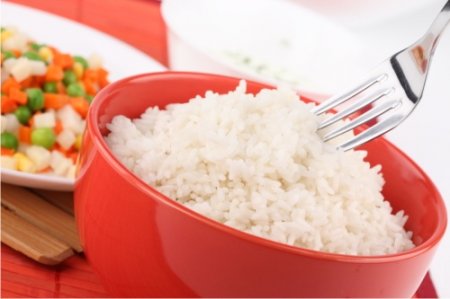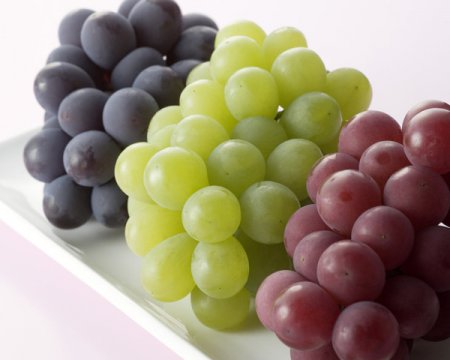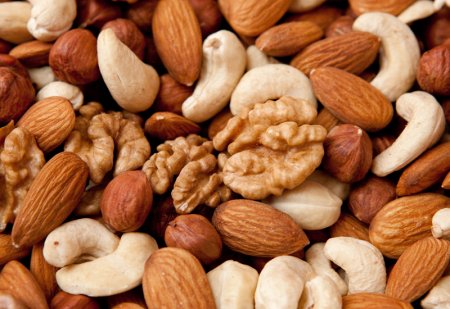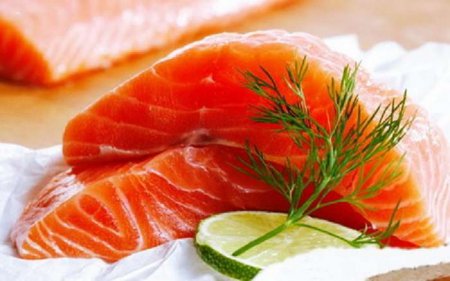Traditional Asian Diet – What Is It, Dietary Guidelines & A Simple Diet Chart
The Theory:
In fact, research has proven that Asians who mostly follow this diet are slimmer and healthier in comparison to their American counterparts who mostly suffer from obesity.
The Aim:
The main aim of this diet is to minimize the risk of many chronic diseases such as diabetes, heart disease and certain cancers.
How Does it Work?
As we all know, Asia is a huge continent and so there cannot be a single traditional Asian diet. A traditional Asian diet pyramid has been prepared which recommends a daily consumption of rice, noodles, corn, millets, bread and other whole grains along with fruits, vegetables, nuts, seeds, legumes and vegetable oils. The optional foods include fish and shellfish, eggs, poultry and dairy, which can be taken once a week. Consumption of red meat is restricted to once a month. This diet also advises you to have at least 6 glasses of water in a day. Beer and wine can be taken in moderation. The traditional Asian Diet is based on the following premises.
Dietary Guidelines:
1. Restriction on Fluid Intake with Meals:
Intake of water or any other drink, especially cold drinks with meals should be avoided. This will prevent the dilution of your digestive enzymes, thus enabling proper digestion. It is advisable to have green tea or other hot teas before a meal as they support enzymatic activities which further enhance your digestive abilities. You can have liquids 30 minutes before or after meals but not in the course of a meal.
2. Ratio of Vegetables to Meat:
The traditional Asian diet chart combines vegetables and meat in the ratio of 3:1. It particularly limits the consumption of meat and potatoes. You can consider taking sweet potatoes if you can’t do without starchy vegetables. Include more of bitter tasting vegetables in your diet. Radish, radichhio and bitter melon should find a place on your plate.
3. Avoid Desserts at Night:
Desserts like sugary cakes, ice cream and cookies should be avoided at night. You can replace them with fruits which are nutritious and delicious. You can also prepare desserts from fruits at home.
4. Consumption of Rice Combinations:
Rice combinations like white, brown, black, red or even purple rice are nutritionally denser than one particular type of rice. In Asia, rice is taken as a supplement to meals, not as a main course. Moreover, unlike other diets, the traditional Asian diet gives more importance to white rice rather than brown rice. Though brown rice is considered more nutritious as its shell is rich in nutrients, it is comparatively difficult for your body to digest those shells. Thus, your body requires a lot of energy to digest brown rice and the process is comparatively lengthier as it slows down your metabolism. Hence, it is advisable to consume both brown and white rice in moderation. It should also be kept in mind that being a carbohydrate, rice is converted into sugar during the digestive process which can cause a dramatic effect in your Glycemic index. Diabetics and pre-diabetics should restrict its consumption to prevent blood sugar fluctuations. Rice combinations, being less starchy, involve lesser sugar conversion and are lower in calories.
5. Consumption of Cooked Vegetables:
This diet advises consuming cooked vegetables rather than raw vegetables. It is true that cooking spoils many nutrients in the vegetables but not cooking them adversely affects your metabolism.
6. Consumption of Calories through Natural Foods:
Research has shown that Asians consume 25 to 40% more calories than Americans, yet they are comparatively healthier and slimmer. The main reason behind this is that these calories are consumed through natural foods and do not cause much harm to the body. It is also comparatively easier to digest than the junk foods and unhealthy processed snacks.
7. Elimination of Cow’s Milk and Milk Combinations
The traditional Asian Diet completely eliminates the consumption of cow’s milk. Besides, milk can combine with almost anything, thus supplying excess calcium and not enough magnesium. Combining the dairy foods drastically slows down your gut motility which adversely affects your digestion. Instead, you can go for coconut, almond, rice or organic soy milk.
8. Consumption of Soup:
The traditional Asian diet emphasizes the consumption of soup as it is a nutrient dense food that fills you up quickly. Most Asian soups are prepared with bone broths or combinations of veggies which provide a rich boost of vitamins and minerals to your body. Besides, the warm temperature of soups can significantly improve your digestion. So, it is advisable to have just a half cup of soup on a regular basis.
9. Optimization of Food Temperatures with Seasons:
One important feature of Asian diet is that it optimizes the energetic temperature of foods with the season. In other words, it emphasizes the consumption of warming foods in cold weather and cooling foods in hot weather. Cold drinks and cold foods like melons, celery and cold salads should not be eaten in winter. Instead, hot soups and stews with meat should be preferred. On the other hand, cooling foods like watermelon and cucumber should be consumed on a hot summer day. The energetic temperature of a food reacts with the body temperature accordingly. So it is important to consume the right temperature foods during the various seasons of the year.
10. Smaller Portions:
Like most diets, the traditional Asian diet lays emphasis on portion control. In other words, it encourages frequent smaller meals. Using smaller vessels or bowls is a great way to exercise portion control.
A Sample Diet Chart for The Traditional Asian Diet Plan:
As stated earlier, the traditional Asian diet relies heavily on whole grains and fresh fruits and vegetables. The traditional Asian diet food pyramid shows whole grains at the bottom level proceeding towards vegetables, legumes, and plant based proteins. Next are the fruits and vegetable oils followed by fish and dairy and eggs and sweets at the last. The diet is low in calories, sugar, saturated fat and sodium. Given below is the sample menu for the traditional Asian diet.
Breakfast 1 scrambled egg, ? cup of spinach cooked in ? tbsp oil with ? teaspoon low sodium sauce sprinkled with fresh chopped chives and black pepper
Snack 7 to 8 almonds
Lunch 2 kale spring rolls, ? cup bean sprouts, a tbsp each of fresh basil, mint and peanut sauce, ? chopped tomatoes, 2 large shrimps cooked, ? cup fresh pineapple and some fruit juice
Dinner A cup of vegetable curry prepared with carrots, beans, cauliflower, onions, spices, peppers and cashews, 1 plate basmati brown rice, ? piece of bread, 1 small pear
Snack ? cup of steamed edamame or other green vegetable
This menu is based on a 1500 calories diet plan. You can prepare your diet chart according to your requirement by incorporating the following food items.
Foods you can Include in the Diet:
1. Grains:
Grains include rice, corn, whole grain breads, millets, noodles etc. Cereals and potatoes are also included in this category.
2. Vegetables:
Healthy vegetables include dark leafy vegetables like bean sprouts, scallions, cabbage and bok choy. These are rich in nutrients which nourish your body.
3. Fruits:
We all know that fruits are rich in nutrients and can be consumed in various ways. The traditional Asian diet encourages the consumption of fruits like mangoes, bananas, grapes, pineapples, tangerines, and watermelons as desserts, snacks or even main meals.
4. Nuts and Legumes:
Nuts and legumes are a rich source of proteins, fiber, vitamins and minerals. Soybeans are an important food item in the Asian diet plan. You can use legumes, tofu and nuts in salads, soups and noodle dishes.
5. Fish:
This dietary plan supports the practice of eating fish on a regular basis. Fish are rich in healthy oils which have spectacular effects on your heart and can prevent heart diseases. In fact, fish has been a part of diet in almost every part of the world.
6. Spices:
The traditional Asian kitchen uses different kinds of aromatic spices like onion, garlic, turmeric and cayenne, all of which have medicinal values. They form a vital part of Asian foods in raw, fried and broiled forms. Being low in fat and sugar contents, they can aid in weight loss.
7. Vegetable Oils:
Traditional oils like margarine and butter have a high content of saturated fats, which increase the risk of heart diseases. The Asian diet recommends using vegetable oils which contain healthy monounsaturated fats such as olive and canola oils.
8. Asian Snacks:
The Asian snacks are much healthier in comparison to the American chips and cookies as they include natural food items like nuts, seaweed, dried fruits and seeds like pumpkin and sunflower seeds. They are packed with micro-nutrients, vitamins and minerals. Always prefer raw nuts to salted ones as they have a higher nutrient content.
To conclude, the traditional Asian diet is basically a form of balanced diet, which incorporates only plant sources of food. This diet will not help you lose weight in a short span of time as weight loss can only be achieved by consistent burning of calories over a prolonged period. In other words, you need to cut at least 500 calories from your daily diet.
In fact, research has proven that Asians who mostly follow this diet are slimmer and healthier in comparison to their American counterparts who mostly suffer from obesity.
The Aim:
The main aim of this diet is to minimize the risk of many chronic diseases such as diabetes, heart disease and certain cancers.
How Does it Work?
As we all know, Asia is a huge continent and so there cannot be a single traditional Asian diet. A traditional Asian diet pyramid has been prepared which recommends a daily consumption of rice, noodles, corn, millets, bread and other whole grains along with fruits, vegetables, nuts, seeds, legumes and vegetable oils. The optional foods include fish and shellfish, eggs, poultry and dairy, which can be taken once a week. Consumption of red meat is restricted to once a month. This diet also advises you to have at least 6 glasses of water in a day. Beer and wine can be taken in moderation. The traditional Asian Diet is based on the following premises.
Dietary Guidelines:
1. Restriction on Fluid Intake with Meals:
Intake of water or any other drink, especially cold drinks with meals should be avoided. This will prevent the dilution of your digestive enzymes, thus enabling proper digestion. It is advisable to have green tea or other hot teas before a meal as they support enzymatic activities which further enhance your digestive abilities. You can have liquids 30 minutes before or after meals but not in the course of a meal.
2. Ratio of Vegetables to Meat:
The traditional Asian diet chart combines vegetables and meat in the ratio of 3:1. It particularly limits the consumption of meat and potatoes. You can consider taking sweet potatoes if you can’t do without starchy vegetables. Include more of bitter tasting vegetables in your diet. Radish, radichhio and bitter melon should find a place on your plate.
3. Avoid Desserts at Night:
Desserts like sugary cakes, ice cream and cookies should be avoided at night. You can replace them with fruits which are nutritious and delicious. You can also prepare desserts from fruits at home.
4. Consumption of Rice Combinations:
Rice combinations like white, brown, black, red or even purple rice are nutritionally denser than one particular type of rice. In Asia, rice is taken as a supplement to meals, not as a main course. Moreover, unlike other diets, the traditional Asian diet gives more importance to white rice rather than brown rice. Though brown rice is considered more nutritious as its shell is rich in nutrients, it is comparatively difficult for your body to digest those shells. Thus, your body requires a lot of energy to digest brown rice and the process is comparatively lengthier as it slows down your metabolism. Hence, it is advisable to consume both brown and white rice in moderation. It should also be kept in mind that being a carbohydrate, rice is converted into sugar during the digestive process which can cause a dramatic effect in your Glycemic index. Diabetics and pre-diabetics should restrict its consumption to prevent blood sugar fluctuations. Rice combinations, being less starchy, involve lesser sugar conversion and are lower in calories.
5. Consumption of Cooked Vegetables:
This diet advises consuming cooked vegetables rather than raw vegetables. It is true that cooking spoils many nutrients in the vegetables but not cooking them adversely affects your metabolism.
6. Consumption of Calories through Natural Foods:
Research has shown that Asians consume 25 to 40% more calories than Americans, yet they are comparatively healthier and slimmer. The main reason behind this is that these calories are consumed through natural foods and do not cause much harm to the body. It is also comparatively easier to digest than the junk foods and unhealthy processed snacks.
7. Elimination of Cow’s Milk and Milk Combinations
The traditional Asian Diet completely eliminates the consumption of cow’s milk. Besides, milk can combine with almost anything, thus supplying excess calcium and not enough magnesium. Combining the dairy foods drastically slows down your gut motility which adversely affects your digestion. Instead, you can go for coconut, almond, rice or organic soy milk.
8. Consumption of Soup:
The traditional Asian diet emphasizes the consumption of soup as it is a nutrient dense food that fills you up quickly. Most Asian soups are prepared with bone broths or combinations of veggies which provide a rich boost of vitamins and minerals to your body. Besides, the warm temperature of soups can significantly improve your digestion. So, it is advisable to have just a half cup of soup on a regular basis.
9. Optimization of Food Temperatures with Seasons:
One important feature of Asian diet is that it optimizes the energetic temperature of foods with the season. In other words, it emphasizes the consumption of warming foods in cold weather and cooling foods in hot weather. Cold drinks and cold foods like melons, celery and cold salads should not be eaten in winter. Instead, hot soups and stews with meat should be preferred. On the other hand, cooling foods like watermelon and cucumber should be consumed on a hot summer day. The energetic temperature of a food reacts with the body temperature accordingly. So it is important to consume the right temperature foods during the various seasons of the year.
10. Smaller Portions:
Like most diets, the traditional Asian diet lays emphasis on portion control. In other words, it encourages frequent smaller meals. Using smaller vessels or bowls is a great way to exercise portion control.
A Sample Diet Chart for The Traditional Asian Diet Plan:
As stated earlier, the traditional Asian diet relies heavily on whole grains and fresh fruits and vegetables. The traditional Asian diet food pyramid shows whole grains at the bottom level proceeding towards vegetables, legumes, and plant based proteins. Next are the fruits and vegetable oils followed by fish and dairy and eggs and sweets at the last. The diet is low in calories, sugar, saturated fat and sodium. Given below is the sample menu for the traditional Asian diet.
Breakfast 1 scrambled egg, ? cup of spinach cooked in ? tbsp oil with ? teaspoon low sodium sauce sprinkled with fresh chopped chives and black pepper
Snack 7 to 8 almonds
Lunch 2 kale spring rolls, ? cup bean sprouts, a tbsp each of fresh basil, mint and peanut sauce, ? chopped tomatoes, 2 large shrimps cooked, ? cup fresh pineapple and some fruit juice
Dinner A cup of vegetable curry prepared with carrots, beans, cauliflower, onions, spices, peppers and cashews, 1 plate basmati brown rice, ? piece of bread, 1 small pear
Snack ? cup of steamed edamame or other green vegetable
This menu is based on a 1500 calories diet plan. You can prepare your diet chart according to your requirement by incorporating the following food items.
Foods you can Include in the Diet:
1. Grains:
Grains include rice, corn, whole grain breads, millets, noodles etc. Cereals and potatoes are also included in this category.
2. Vegetables:
Healthy vegetables include dark leafy vegetables like bean sprouts, scallions, cabbage and bok choy. These are rich in nutrients which nourish your body.
3. Fruits:
We all know that fruits are rich in nutrients and can be consumed in various ways. The traditional Asian diet encourages the consumption of fruits like mangoes, bananas, grapes, pineapples, tangerines, and watermelons as desserts, snacks or even main meals.
4. Nuts and Legumes:
Nuts and legumes are a rich source of proteins, fiber, vitamins and minerals. Soybeans are an important food item in the Asian diet plan. You can use legumes, tofu and nuts in salads, soups and noodle dishes.
5. Fish:
This dietary plan supports the practice of eating fish on a regular basis. Fish are rich in healthy oils which have spectacular effects on your heart and can prevent heart diseases. In fact, fish has been a part of diet in almost every part of the world.
6. Spices:
The traditional Asian kitchen uses different kinds of aromatic spices like onion, garlic, turmeric and cayenne, all of which have medicinal values. They form a vital part of Asian foods in raw, fried and broiled forms. Being low in fat and sugar contents, they can aid in weight loss.
7. Vegetable Oils:
Traditional oils like margarine and butter have a high content of saturated fats, which increase the risk of heart diseases. The Asian diet recommends using vegetable oils which contain healthy monounsaturated fats such as olive and canola oils.
8. Asian Snacks:
The Asian snacks are much healthier in comparison to the American chips and cookies as they include natural food items like nuts, seaweed, dried fruits and seeds like pumpkin and sunflower seeds. They are packed with micro-nutrients, vitamins and minerals. Always prefer raw nuts to salted ones as they have a higher nutrient content.
To conclude, the traditional Asian diet is basically a form of balanced diet, which incorporates only plant sources of food. This diet will not help you lose weight in a short span of time as weight loss can only be achieved by consistent burning of calories over a prolonged period. In other words, you need to cut at least 500 calories from your daily diet.




